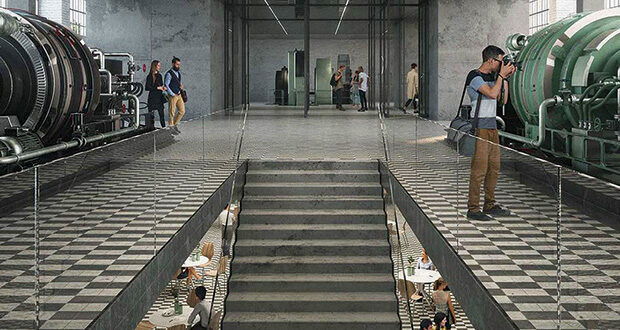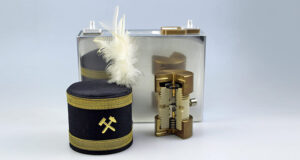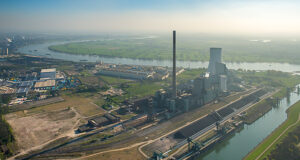Since 2005 the Maas Group has had its registered office on the grounds of the Pattberg colliery of the former Rhineland mine in Moers/Germany. The group has been involved in the mining industry for 110 years and currently employs 450 staff in the business units Construction (structural engineering, civil engineering, steel construction/hydraulic engineering and track construction), Industrial Services including Recycling, as well as Mining and Tunnel Construction. In November 2020 Maas took over the historic machine hall of the Pattberg pit from the Foundation for the Preservation of Industrial Monuments and Historical Culture in order to build offices. The editorial staff of Mining Report Glückauf spoke to Klaus Maas, Managing Partner of the Maas Group, about the reasons and further plans.
Mining Report Glückauf: What gave you the idea of purchasing the historic machine hall of the former Pattberg colliery in Moers-Repelen and transforming it into an office building?
Klaus Maas: The buildings of the former head office of the Maas Group in Moers-Utfort were filled to capacity, meaning we needed to find a suitable location where we could accommodate our three business units Construction, Industrial Services incl. Recycling, as well as Mining and Tunnel Construction, with a total of around 450 staff. Considering our long tradition in and the connection with mining – this year the Maas Group has been involved in the mining sector for 110 years – it made sense to settle on the grounds of one of the former pits in and around Moers. We decided on the Pattberg colliery, which was decommissioned in the middle of 1993. Here we purchased an area of 80,000 m2 on which the historic and listed machine hall of the mine is located. The building has been a venue of the Foundation for the Preservation of Industrial Monuments and Historical Culture since 1995 and was used occasionally for cultural events. The conversion of the former warehouse, which we acquired in 2012, has now also become too small, meaning we would like to use some of the machine hall with its approximately 1,000 m2 in the future as an office building. This is a job that will be tackled in the coming years.
MRG: What criteria did you include in the plans for the reconstruction and what were the most important stipulations you gave the commissioned architects?
Maas: The building with its brick front and high windows, which was built in 1932 in the typical Bauhaus design, should be preserved as a monument. In the hall there is an electric hoist from 1912 on the tiled floor, a double Ilgner converter also from 1912 and another converter from 1962. They should also be preserved. That’s why we will implement a “house within a house” solution with offices on two floors, which are on supporting beams that reach deep into the foundations. The Foundation for the Preservation of Industrial Monuments and Historical Culture praised our plan as “trendsetting” for these kinds of projects. (Figure 1)
MRG: Within what framework will the machine hall be made accessible to the public in the future?
Maas: As before, the historical part of the machine hall should also be available to the interested public, e. g., within the framework of the “Open Monument Day”. The business use must also be taken into account.
MRG: As you have already mentioned, the Maas Group has been involved in the mining sector for 110 years. After the end of the coal mining industry you managed to give your mining division a new perspective. What considerations led to not abandoning this division?
Maas: The history of the Maas Group is not conceivable without mining. And there is enough mining work in Germany even after the end of the coal mining industry, be it in the potash and permanent waste disposal sites, rock salt or ore mining. Over the decades we developed certain core competencies, e. g., for excavation and pit work, dewatering or in underground engineering, which are recognised and which we would like to preserve. We currently employ 80 people in this area, 13 of whom will enter early retirement by 2022. Not only do we want to replace these staff members, but also invest in more miners, particularly faceworkers.


